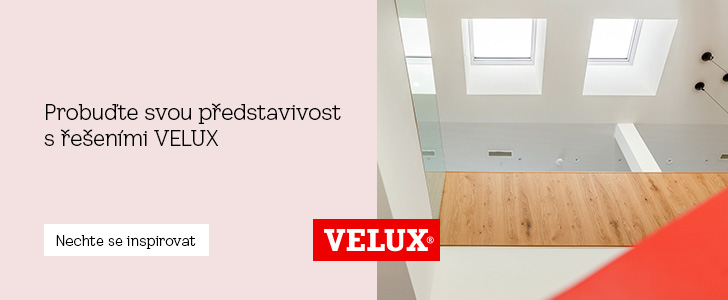
The design house Mobile Hut has wheels, is made of aluminum sheet, but respects the archetypal shape of the Czech house
Architects of the Artikul studio: Aluminum design called for Schüco windows and doors
The architects of the Artikul studio can boast that they built a house right in front of the Industrial Palace at the Exhibition Grounds in Prague's Holešovice. Without a building permit. Next time, they might build it on mountain ridges. Even there, they won't need approval from the building authority. Their Mobile Hut, a house in aluminum design that also respects the basic archetypal shape of a Czech house with a gable roof, has wheels and has been homologated as a trailer vehicle – it has its own technical passport and license plate, and you can build it, more precisely park it, with the owner's consent basically anywhere you can drive it to. It is also independent and energy self-sufficient. For four people for up to two weeks. More at www.mobilehut.eu, www.artikul.eu, and www.schueco.cz
At the beginning of the Mobile Hut project was the idea of MUDr. Jan V. Raiman, a world-renowned orthodontist who has always been an enthusiastic traveler. In his free time, he sought paths to nature, the countryside, and above all independence. To be able to set off, even as a student, he installed various sleeping adjustments and storage spaces in his car. But that wasn’t enough for him. Over time, he wanted a solution that would be not only comfortable but also modern, stylish, and self-sufficient, yet sufficiently mobile. He found nothing on the market that met his ideas until he met the architects from the Artikul studio. Jan Gabriel and Jakub Vlček had been working on building houses from containers for some time. Their taste and perception of the contrast between nature and modern lifestyle intrigued MUDr. Jan V. Raiman, and together they set to work and the house on wheels Mobile Hut was born. Dimensions and weights: 5 meters in length, 2.3 m in width, and 3.9 m in height, weighing 2100 kg. Usable area of 15 m² and an additional 4 m² terrace. A modern house in aluminum design, yet shaped by the classical Czech house with a gable roof and chimney. Design-wise and practically, independent and self-sufficient.
Essentially, the entire structure is a sandwich, glued together from aluminum sheet, with the core made of polyurethane foam, which also serves as insulation; the interior is lined with solid spruce bioboard. The sandwich panels were developed with the help of a company from Vysoké Mýto, which produces panels for truck body builds or refrigeration boxes. "They have extensive experience with gluing and shell sealing technology. The sandwich is glued without any reinforcements, and a huge advantage is that the entire house is very lightweight – including the chassis and all equipment, it weighs just over two tons,” continues Ing. arch. Jakub Vlček.
The house is thought out to the last rivet. Every millimeter of space is organized so efficiently that you can pack a 2+kk apartment into it. By adjusting the built-in furniture, the layout can adapt to different functions, with a raised bed on the ground floor featuring two rows of pull-out drawers where two people can sleep when unfolded, while upstairs there is also a double bed. The fully equipped kitchen has two gas burners, a stainless steel sink, or built-in electrical outlets for additional appliances. The windows open outward to not take up space inside, and the full bathroom has a shower, sink, and chemical toilet. The heart of the house is a fireplace oven. The folding terrace adds another 4 m² to the usable interior area (15 m²).
The creators of Mobile Hut presented it during the October Design Bloc, where it was parked right in front of the Industrial Palace, and the architects themselves even spent a night there for testing. The concept, which initially developed as the realization of one person's idea, has already found so many admirers during the project work that the Mobile Hut is preparing for mass production.
Systems Used by Schüco in the Project:
Windows: Tilt-and-turn window Schüco AWS 50
Doors: Double-leaf doors Schüco ADS 50
At the beginning of the Mobile Hut project was the idea of MUDr. Jan V. Raiman, a world-renowned orthodontist who has always been an enthusiastic traveler. In his free time, he sought paths to nature, the countryside, and above all independence. To be able to set off, even as a student, he installed various sleeping adjustments and storage spaces in his car. But that wasn’t enough for him. Over time, he wanted a solution that would be not only comfortable but also modern, stylish, and self-sufficient, yet sufficiently mobile. He found nothing on the market that met his ideas until he met the architects from the Artikul studio. Jan Gabriel and Jakub Vlček had been working on building houses from containers for some time. Their taste and perception of the contrast between nature and modern lifestyle intrigued MUDr. Jan V. Raiman, and together they set to work and the house on wheels Mobile Hut was born. Dimensions and weights: 5 meters in length, 2.3 m in width, and 3.9 m in height, weighing 2100 kg. Usable area of 15 m² and an additional 4 m² terrace. A modern house in aluminum design, yet shaped by the classical Czech house with a gable roof and chimney. Design-wise and practically, independent and self-sufficient.
Mobile Hut resonates with the current trend of nomadic lifestyles
"Mobile Hut is the result of the search for a new form of mobile housing. It is a designer house that offers full comfort for living, with the difference that it can also be 'packed' and transported anywhere. A product at the intersection of architecture and design aims to open new ways of temporary housing in overpriced cities and in places where normal construction is not possible. The dwelling resonates with the current trend of a nomadic lifestyle and offers its users a chance to escape from the stereotypical habits of consumer society and get closer to nature,” presents the concept of Mobile Hut Ing. arch. Jan Gabriel, one of the project's authors.A house that can drive at 90 km/h
To move the Mobile Hut, you don't need a crane or a truck, just a larger passenger car with a tow bar, the so-called ball hitch. The house on wheels has been approved for operation by DEKRA as a trailer vehicle category O2, has its own technical passport and license plate. The chassis is part of the structure, supporting the floor, which is why Mobile Hut is not treated as a building. However, it is still a house, even though legislatively it is a vehicle with a maximum speed limit of 90 km/h.The sandwich panel consists of aluminum sheet, PUR foam, and spruce board
The development, including the design of the house on wheels, took about two years. "Here, modern design and traditional approach merge. We wanted the house to be always in contrast to the place where it would be located, which is why we designed an aluminum shell. But at the same time, we wanted the house to have the basic archetypal shape of a Czech building, preserving that feeling of a classic house with a gable roof and chimney. It’s not just some designed hut; individual elements go hand in hand, the shape of the house, construction details, technical equipment, and the enormous functionality of the house are the result of long development and testing,” explains Ing. arch. Jakub Vlček.Essentially, the entire structure is a sandwich, glued together from aluminum sheet, with the core made of polyurethane foam, which also serves as insulation; the interior is lined with solid spruce bioboard. The sandwich panels were developed with the help of a company from Vysoké Mýto, which produces panels for truck body builds or refrigeration boxes. "They have extensive experience with gluing and shell sealing technology. The sandwich is glued without any reinforcements, and a huge advantage is that the entire house is very lightweight – including the chassis and all equipment, it weighs just over two tons,” continues Ing. arch. Jakub Vlček.
The aluminum design of the house called for Schüco windows and doors
In the waterproof shell made of anodized aluminum, nothing but aluminum windows and doors could be installed. "That was the first reason we chose Schüco. And the second reason was that Schüco offers definitively the largest range of different windows and constructions that we needed for this project, namely lightweight windows, yet providing good insulation parameters, which also open outward and with a frame construction depth of only five centimeters. No other manufacturer was able to fulfill this for us,” praises Schüco Ing. arch. Jakub Vlček. Thermally insulated aluminum profiles Schüco AWS 50 for windows with a visible width of only 40 mm and Schüco ADS 50 for doors with double safety glass were custom supplied by A.R. OKENNÍ TECHNIKA. The frames were directly embedded in the sandwich panels during production, which increased the strength of the structure, and only after the house was completed were the wings installed.Mobile Hut can be connected to utilities, but it can be self-sufficient for four people for up to two weeks
The basic version of Mobile Hut is connectable to utilities, meaning water and electricity. In the "off-grid" variant, the house is independent of the grids – it is equipped with solar panels, has hi-tech batteries, filters, and water tanks, independent gas heating, and wood stoves, making it self-sufficient for four people for up to two weeks without any connections in any season.The house is thought out to the last rivet. Every millimeter of space is organized so efficiently that you can pack a 2+kk apartment into it. By adjusting the built-in furniture, the layout can adapt to different functions, with a raised bed on the ground floor featuring two rows of pull-out drawers where two people can sleep when unfolded, while upstairs there is also a double bed. The fully equipped kitchen has two gas burners, a stainless steel sink, or built-in electrical outlets for additional appliances. The windows open outward to not take up space inside, and the full bathroom has a shower, sink, and chemical toilet. The heart of the house is a fireplace oven. The folding terrace adds another 4 m² to the usable interior area (15 m²).
The creators of Mobile Hut presented it during the October Design Bloc, where it was parked right in front of the Industrial Palace, and the architects themselves even spent a night there for testing. The concept, which initially developed as the realization of one person's idea, has already found so many admirers during the project work that the Mobile Hut is preparing for mass production.
Project Information
Project Name: Mobile Hut
Architectural Design: Ing. arch. Jan Gabriel and Ing. arch. Jakub Vlček, ARTIKUL architects s.r.o.
Schüco Partner for Production and Assembly: A.R. OKENNÍ TECHNIKA, spol. s r.o.
Manufacturer of Sandwich Panels: PSP izotherm, Vysoké Mýto
Living Area: 15 m² + terrace 4 m²
Implementation: 2017-2018
Systems Used by Schüco in the Project:
Windows: Tilt-and-turn window Schüco AWS 50
Doors: Double-leaf doors Schüco ADS 50
The English translation is powered by AI tool. Switch to Czech to view the original text source.
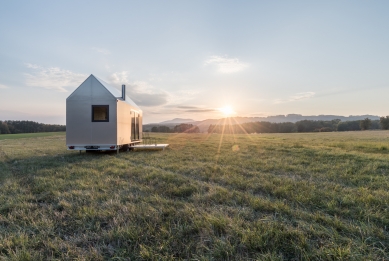
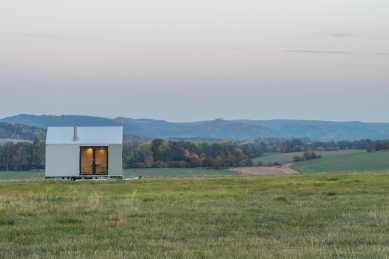
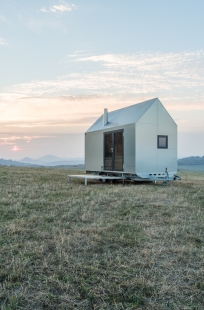
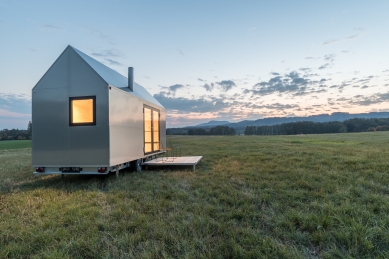
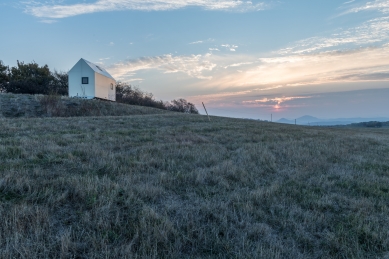
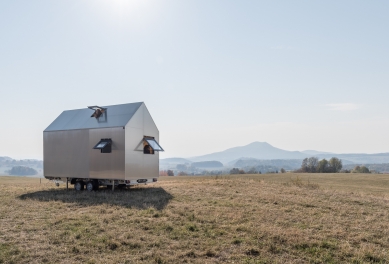
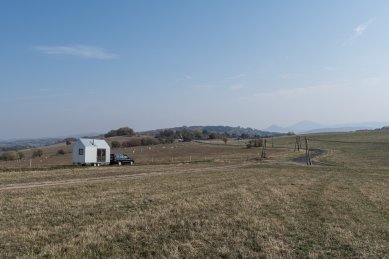
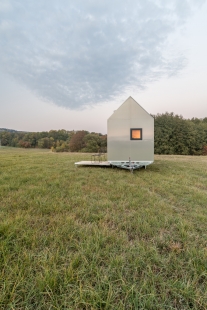
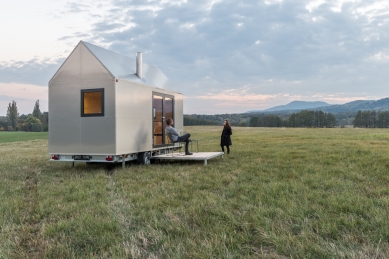
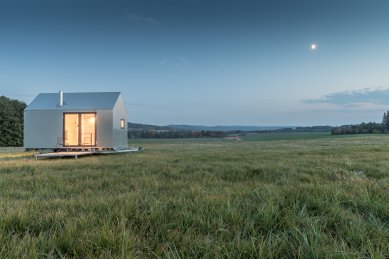
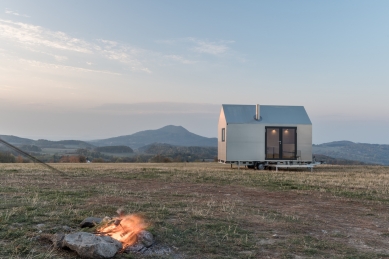
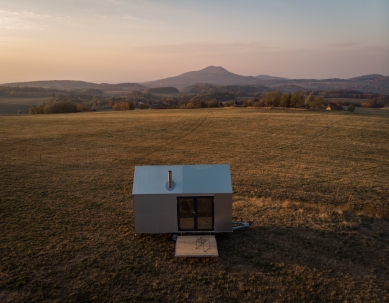
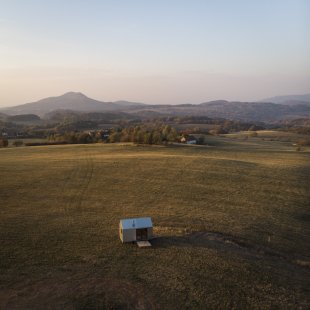
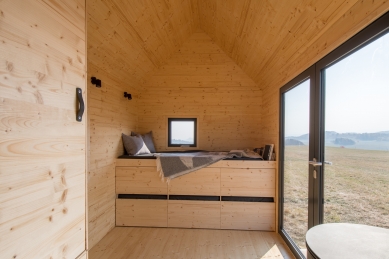
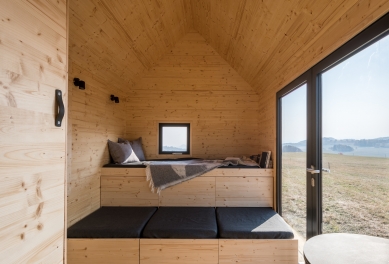
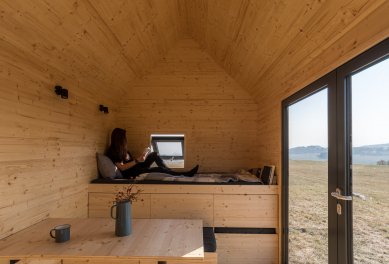
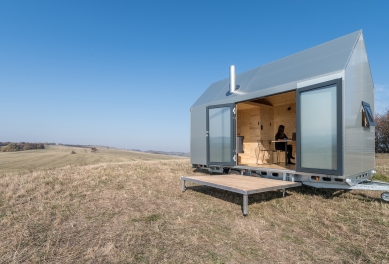
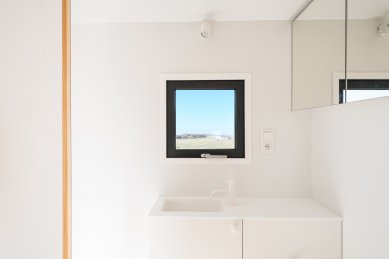
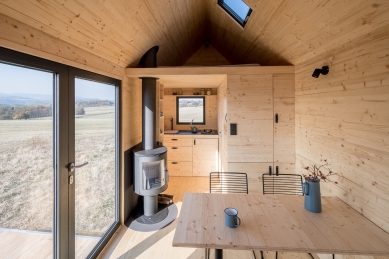
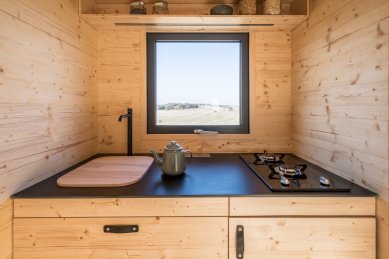
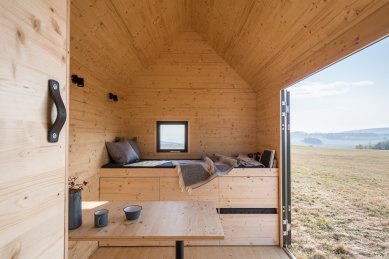
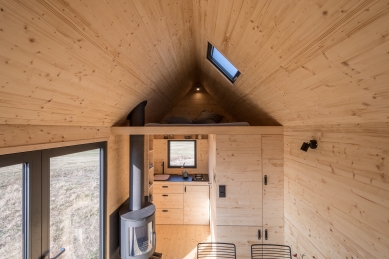
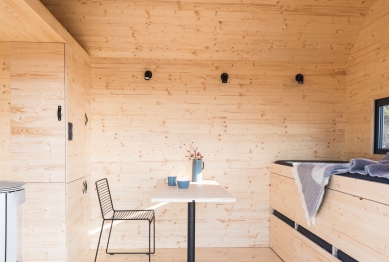
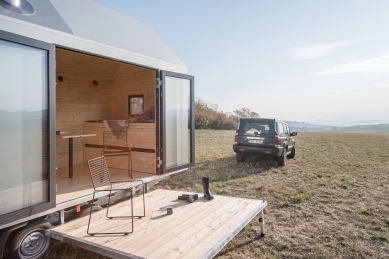
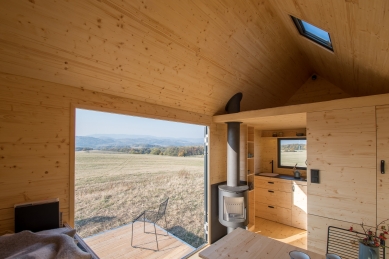
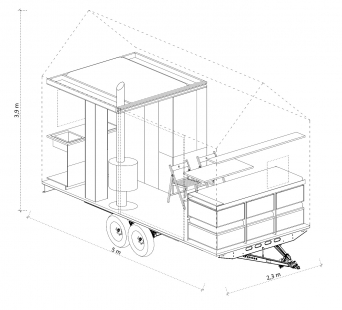
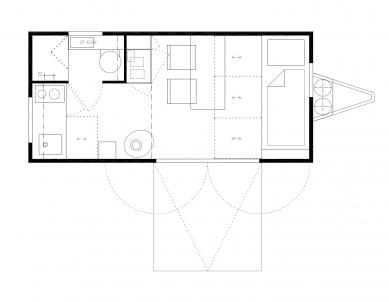
Related articles
0
04.02.2019 | The energy-efficient building of the RAL Institute plays with all colors
0
20.11.2018 | The outdated house was transformed into a villa in the Bauhaus style
0
19.10.2018 | House X v Singapore
0
12.09.2018 | The wandering stone offers privacy as well as views of the mountain peaks.
0
30.01.2018 | Polished gemstone with a panoramic view
0
13.03.2017 | The family house set in a natural environment has been built in Belgium



